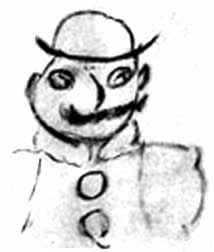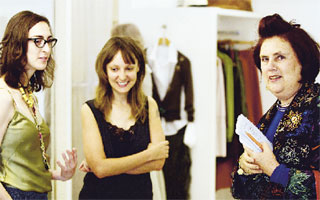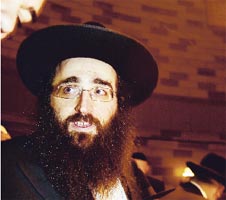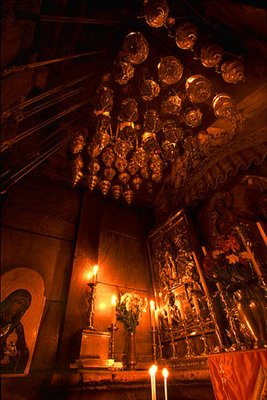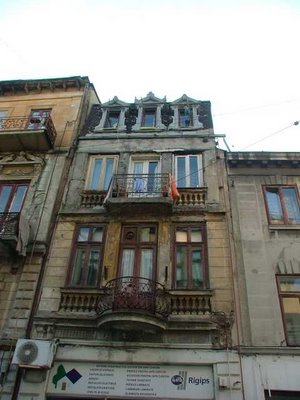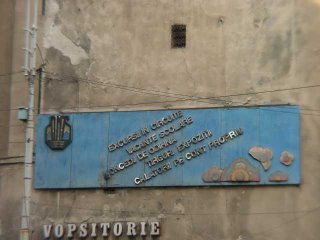
Sarbatoresc Ziua Victoriei asupra Germaniei naziste si fortelor axei cu recenzia cartilor lui Anthony Beevor despre batalia de la Stalingrad si despre caderea Berlinului
Stalingrad Berlin
Caderea-1945
Trad. Delia Razdolescu Trad. Diana Elena Puscasu
Daniela Truia
Editura RAO 2005 Editura RAO 2005
Istoria se face, despre istorie se scrie. In lumea de azi, flamanda dupa senzationalul care se vinde bine, se scrie istoria razboaielor in care se mai poarta inca batalii, in care se mai aude zarva luptelor. Nu mai este nevoie de perspectiva oferita de timp, de detasare. Nu s-a racit gura tevii pustii de vanatoare, o carte se publica detaliind traseele alicelor care cauta umbre de infractori. Senzationala, galbena. Se vinde.
Praslea al meu n-a auzit de Marele Razboi. N-a auzit nici macar de Razboiul al doilea. Nu stie de Stalin, n-a citit (inca) despre Hitler, mai aude cate-o vorba prin casa despre Ceausescu si-l confunda cu serviciul de ceai.
Pentru noi astia mai trecuti prin viata, care am apucat sa stam de vorba cu parintii, sa mai prindem in viata un bunic ba chiar un strabunic, care avem un neam disparut la Stalingrad, la Treblinka sau in puscariile comuniste, povestea celui de al Doilea Razboi Mondial, care a ucis, schilodit, ars si distrus si a schimbat lumea mai mult decat toate celelalte razboaie ale omenirii luate la un loc, nu numai ca isi pastreaza interesul major, dar devine cu trecerea timpului din ce in ce mai fascinanta.
Istoricul, asemenea vulturului care se inalta deasupra pamantului , cu trecerea anilor capata avantajul privirii de ansamblu si tot precum vulturul se napuseste asupra detaliului surprins la sol, pe care, acolo jos, nimeni nu-l stie.
Englezul Antony Beevor (nascut in 1946) militar de cariera, descendentul unei familii cu bogata traditie literara , este considerat astazi unul dintre cei mai insemnati istorici militari. “Stalingrad” ,opera publicata in 1998, este incoronata cu primul premiu Samuel Johnson, premiul de istorie Wolfson si premiul pentru literatura(!) Hawthornden(1999). Urmeaza publicarea in 2002 “Berlin, Caderea –1945”.
Prabusirea imperiului sovietic duce la neasteptata, surpinzatoarea si, dupa unii, temporara deschidere a arhivelor secrete, pastrate sub belciuge grele, departe de ochii lumii in beciurile rusesti. Acest eveniment impune reconsiderarea istoriei, si Beevor, combinand priceperea militarului de cariera cu talentul, imaginatia si curiozitatea scriitorului, se afla in pozitia ideala, la timpul potrivit, sa ne aduca in fata, proaspata, teribila, in fine demistificata si adevarata, povestea inclestarii pe viata si pe moarte, dintre Hitler si
Stalin, dintre milioanele de “Ivan” si de “Fritz”.
De la Berlin la Stalingrad si inapoi la Berlin, pe aceasta axa s-a jucat soarta razboiului. Pe aceasta axa s-a jucat si hotarat soarta lumii care avea sa fie dupa razboi caci Hitler care si-a trimis trupele sa “apere” Marele Reich de bolsevici, odata cu infrangerea, i-a adus in inima Europei unde aveau sa ramana pentru aproape jumatate de secol.
1.
In zorii zilei de 22 iunie 1941, trei milioane de soldati germani impreuna cu celelalte armate pro-axa,( romani,unguri, finlandezi ), in total peste patru milioane de combatanti au atacat Uniunea Sovietica, din Finlanda pana la Marea Neagra. Hitler, strategul de fotoliu, bantuit de umbra lui Napoleon, dirijeaza atacul din Barlogul Lupului (Wolfsschanze ) pe trei axe, spre Leningrad in nord, spre Kiev la sud si in fine spre inima imperiului bolsevic, Moscova. Diviziunea fortelor axei pe trei directii, neasteptata rezistenta a inamicului, intarzie atat inaintarea trupelor germane cat si decizia Fuhrer-ului de a ocupa Moscova, tarziu in septembrie, operatiunea Taifun este lansata, dar Generalul Iarna, in retragere din 1812, isi face aparitia si Moscova este salvata. Odata cu primavara, Hitler cu ochii spre campurile petrolifere din Caucaz relanseaza operatiunea Barbarossa, incearca sa inainteze rapid catre est, catre Volga si Don.
Orasul Stalingrad (Volgograd) se afla acolo unde cele doua fluvii isi dau buna ziua fara sa isi amestece apele. Stalingradul, orasul care pana atunci era doar un nume pe harta, devine tinta atacului german pe frontul de est in directia Caucaz, iar pentru Stalin devine locul pe unde nu se va trece niciodata. Ofensiva spre Stalingrad este intarziata de probleme logistice ale germanilor, incepe si ea tarziu spre toamna in asa fel incat, si aici ca la Moscova, Generalul Iarna preia comanda. Din august 1942 pana la sfarsitul lui ianuarie 1943 se desfasoara cea mai sangeroasa batalie din isorie, batalie in care aveau sa dispara peste un milion de oameni, soldati si civili, batalie in care intreaga armata a sasea germana (peste 300000 de soldati sub ordinele generalului de armata Friedrich Wilhem Paulus urma sa fie incercuita si nimicita). Pe 31 ianuarie generalul Paulus aflat in incercuire este ridicat la gradul de feldmareshal, caci nu exista un precedent in istoria Germaniei in care un feldmaresal se preda viu. Paulus intelege mesajul lui Hitler si declara generalului Pfeffer:”Nu intentionez sa ma sinucid pentru acest caporal din Boemia”. Semneaza capitularea , este luat in captivitate , eliberat in 1953 , isi sfarseste zilele in Germania de est, unde incearca sa se dezvinovateasca si sa isi apere locul in istorie. Cand nemtii isi numara mortii de la Stalingrad descopera ca peste 500 000 de soldati germani , romani si unguri pierisera pe campul de lupta.
Pentru romani, istoria bataliei de la Stalingrad prezinta un interes special. Aflam ca trupele romane sunt dispretuite de germani, prost echipate, fara armament, munitii si combustibil. Aruncati in lupta, sunt sacrificati fara mila Apare in paginile lui Beevor figura unui roman, generalul –locotenent Mihail Lascar, decorat cu Crucea Cavalerilor la Sevasopol si care, comandand “grupul Lascar” adunat din ramasitele Corpului 5 armata, rezista eroic. “Intoarcerea armelor” de dupa 23 august 1944, s-a facut cu atat mai mare usurinta cu cat soldatii si ofiterii romani au pastrat in memorie tratamentul la care au fost supusi de aliatii germani la Stalingrad.
La sfarsitul luptei, la 1 februarie 1943, un ofiter sovietic mana din spate prin ruinele orasului un grup de prizonieri germani. Le spune: “Asa va arata Berlinul, cand vom ajunge acolo”.
La Stalingrad, drumul spre Berlin a fost deschis. In fruntea trupelor se afla generalul de armata G.K. Jukov care nu se va mai opri decat cand va ajunge in barlogul “fiarei naziste”.
2. Armatele sovietice pornesc spre Berlin insetate de razbunare. Nu razbunare pentru infrangeri in lupta, ci pentru bestialitatea comportamentului , distrugerea si moartea semanate fara discernamant de catre trupele axei.
In noiembrie 1944 Armata Rosie se grupeaza pe granitele de est ale Reich-ului, iar Hiltler considera ca ghinionul Germaniei incepuse “o data cu avansarea armatelor rusesti pe frontul romanesc de pe Don”. El, “dadea vina pe nefericitii lui aliati, insuficient inarmati si uitati pe flancurile vulnerabile de-o parte si de alta a Stalingradului si nu pe refuzul sau obsesiv de a da atentie avertismentelor despre pericol”. Propaganda nazista dezumanizase pe comunisti, pe slavi si pe evrei, iata-I pe acestia la portile imperiului, gata de jaf, viol si distrugere, ceea ce avea sa urmeze nu era decat implinirea profetiilor Fuhrer-ului…
Cat despre Stalin cel viclean, desigur Berlinul reprezenta un simbol important la care nu era dispus sa renunte, dar mai cu seama dorea sa ajunga acolo inaintea aliatilor in asa fel incat sa puna mana pe documentele, echipamentele si uraniul care se aflau in institutele de cercetare atomica din Berlin. Stalin si Beria pregateau deja razboiul de dupa razboi.
La 13 ianuarie 1945 generalul Cerniahovski lanseaza ofensiva impotriva Prusiei Orientale. O zi mai tarziu, maresalul Rokossovski ataca spre nord si nord-vest cu scopul izolarii Prusiei de est. Armata Rosie, dezlantuita si pestrita, tanchisti, cazaci calare pe cai cu seile incarcate cu trofee de razboi, masini de toate marcile fie rechizitionate fie din doatare, carute trase de cai, camile, se napusteste la un jaf si viol greu de imaginat. Peste doua milioane de femei, de toate varstele urmeaza sa fie supuse violului, de cele mai multe ori viol in grup. Prusia de est este trecuta prin foc si sabie, ceasul razbunarii sunase.
La 30 ianuarie Hitler se adreseaza pentru ultima oara poporului german.
La 8 martie Jukov este chemat de Stalin la Moscova, si asaltul final asupra Berlinului este hotarat si pus la punct. Berlinul era un trofeu dorit si de britanici, Stalin trebuia sa-I pacaleasca, sa se bizuie pe naivitatea lui Eisenhower si sa o joace impotriva inteligentei lui Chrchill. De fapt americanii nu isi doreau decat sa-si termine razboiul cu cat mai putine victime si sa se intoarca cat mai curand acasa. Pentru ei Berlinul nu insemna mare lucru.
Armata Rosie era pregatita sa atace barlogul “fiarei naziste”.
2,5 milioane de oameni, 41600 de tunuri si mortiere, 6250 de tancuri si tunuri autopropulsate si 7500 de avioane se gaseau la portile Berlinului.
La 30 aprilie in zori, Reichstag-ul este luat cu asalt. Se dorea ca pe 1 mai, la parada oficiala din Moscova, steagul rosu sa fluture peste Reichstag.
In buncar, Hitler se pregateste de moarte, isi incearca una din capsulele de cianura pe adorata lui , Blondi, femela de ciobanesc german, si pe cei patru pui ai ei. Cianura are efectul dorit, atat pentru catea si puii ei cat si pentru cei sase copiii a lui Goebbels care urmau sa fie sacrificati putin mai tarziu de propria lor mama.
La 1 mai 1945 Marele Reich, o data cu sinuciderea lui Hitler si a anturajului lui imediat, incetase sa mai existe.
3. Atat “Stalingrad” si “Berlin” se citesc cu rasuflarea taiata. Daca atunci cand l-am citit pe “Stalin” a lui Edvard Radzinsky (editura Aquila’93, 2003) il simteam pe diavol impreuna cu mine in biblioteca, la lectura celor doua opere, atat Sarsaila cat si Aghiutza sunt prezenti. Cei doi, Hitler si Stalin, personajele cele mai sinistre produse de istorie inclestati intr-o lupta gigantica care a lasat in urma ei o distrugere pe care mintea omeneasca nu o poate cuprinde. Despre cruzimea nazista mai aflasem , insa
Beevor spulbera intr-atat mitul omului sovietic si bravului soldat rus, incat ambasadorul Rusiei in Marea Britanie protesteaza oficial si denunta “Berlin-Caderea 1945”drept o “colectie de minciuni si insulte impotriva poporului care a salvat omenirea de nazism” iar O.A. Rzhevsky, presedintele asociatiei de istorie a Marelui Razboi pentru Apararea Patriei, considera ca Antony Beevor reinvie opiniile rasiste si discreditate ale istoricilor neo-nazisti care descriu trupele sovietice drept hoarde asiatice sub-umane”…
Beevor spulbera si mitul contributiei americane pentru victoria finala asupra celui de-al treilea Reich, considera semnificativ ajutorul American oferit atat prin echipament penru Armata Rosie cat mai ales bombardamentele intensive asupra Germaniei care au avut drept consecinta retragerea de pe frontul rusesc a 80% din escadrilele aviatiei germane. Autorul considera ca vestul nu a inteles pentru foarte multi ani suferinta uriasa prin care a trecut armata si poporului rus.
Intr-un interviu acordat in 2005 dl.-ui Tony Jones de la televiziunea australiana, Antony Beevor considera ca lectia care trebuie invatata din aceasta uriasa confalgratie mondiala este pericolul reprezentat de dezumanizarea dusmanului prin propaganda. Aceasta dezumanizare reciproca create respectiv de propagandele naziste si bolsevice care au dus la cel mai ingrozior razboi din istorie. Si, putin surprinzator, Beevor citeaza din actualitate, dezumanizarea infidelilor (civilizatia iudeo-crestina) de care fundamentalistii musulmani.
Si invers, as zice.
.
